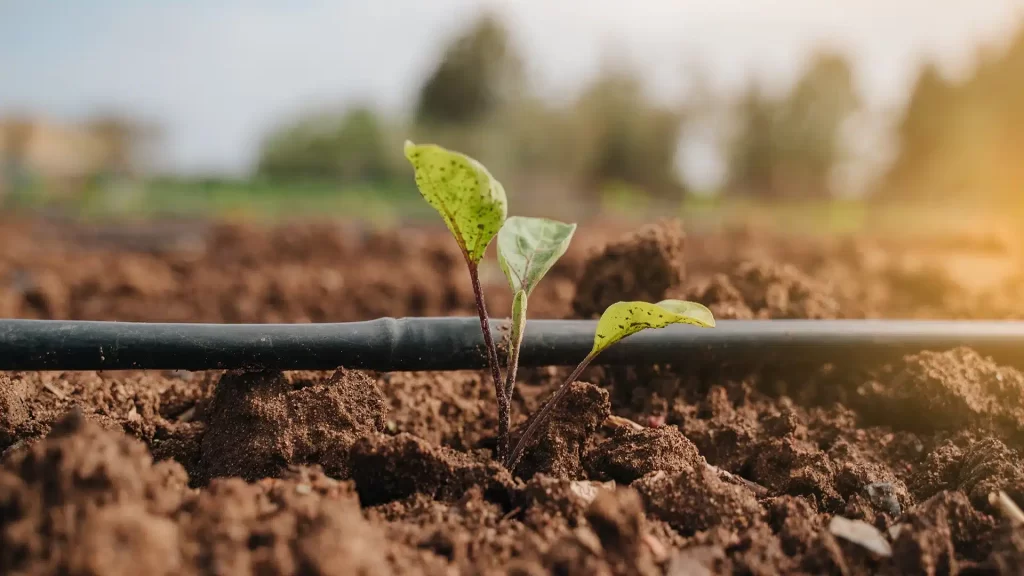Smart farming uses technology and data-driven solutions to improve agricultural practises. With the increasing demand for food production due to a growing global population, the agriculture industry is under pressure to improve productivity and efficiency while reducing the environmental impact. Smart farming has emerged as a solution to these challenges, with IoT-based irrigation systems critical to optimising farming operations. In this blog, we will explore the need for smart farming, the role of IoT-based irrigation systems, and the importance of optimization, automation, and efficiency in agriculture practises.
The Need for Smart Farming and IoT Solutions
Traditional agriculture methods face numerous challenges, including water scarcity, climate change, and soil degradation. These challenges make it difficult for farmers to maximize yields while ensuring sustainable farming practices. Smart farming using IoT solutions can help overcome these challenges by optimizing resource usage, reducing waste, and increasing efficiency.
IoT solutions provide farmers with real-time data on soil moisture, weather conditions, and other environmental factors that affect crop growth. This data can be used to make informed decisions on irrigation, fertilization, and other farming practices, leading to improved yields and reduced environmental impact. Several smart farming projects have been successful in improving yields and efficiency. For example, a project by the Dutch government used IoT solutions to monitor the water quality and nutrient levels in greenhouse crops.
The system provided real-time crop data, enabling farmers to optimize their farming practices and increase yields by up to 20%. Similarly, a project by the Indian government used IoT solutions to provide farmers with real-time weather information, enabling them to make informed decisions on planting and harvesting. The project improved yields by up to 30% and reduced water usage by up to 20%.
The Role of IoT-based Irrigation Systems
Traditional irrigation methods involve manual monitoring of soil moisture levels and weather conditions, which can be time-consuming and inaccurate. Irrigation systems that use IoT solutions provide real-time data on soil moisture levels, weather conditions, and other environmental factors, enabling farmers to optimize their irrigation practices.
IoT-based irrigation systems use sensors and smart controllers that are connected to the internet and provide farmers with real-time data on their crops. This data can be used to automate irrigation operations, ensuring that crops receive the right amount of water at the right time. By optimizing irrigation practices, farmers can reduce water usage and improve yields.
IoT-based irrigation systems offer several benefits over traditional irrigation methods. First, they provide real-time monitoring, enabling farmers to make informed decisions on irrigation practices. Second, they enable farmers to automate irrigation operations, reducing labor costs and ensuring that crops receive water even when farmers are away. Third, they optimize water usage, reducing waste and improving yields. Fourth, they enable farmers to remotely control irrigation operations, reducing the need for manual intervention.
Optimization, Automation, and Efficiency in Smart Farming
Optimization, automation, and efficiency are critical components of smart farming. By optimizing farming practices, farmers can reduce waste and improve yields. Automation of farming operations reduces labor costs and improves efficiency. Efficiency in farming practices reduces the environmental impact and ensures sustainable farming practices.
IoT-based irrigation systems play a critical role in optimizing, automating, and improving efficiency in farming practices. By providing real-time data on soil moisture levels, weather conditions, and other environmental factors, farmers can optimize their irrigation practices, reduce water usage, and improve yields. The automation of irrigation operations reduces labor costs and ensures that crops receive water even when farmers are away. Improved efficiency in farming practices reduces the environmental impact and ensures sustainable farming practices.
Key Features of IoT-based Irrigation Systems
IoT-based irrigation systems have several key features that enable farmers to optimize their irrigation practices.
Soil Moisture Sensors
Soil moisture sensors provide real-time data on the moisture level in the soil. This data can be used to automate irrigation operations, ensuring that crops receive the right amount of water at the right time.
Weather Monitoring
Weather monitoring provides farmers with real-time data on weather conditions such as temperature, humidity, and rainfall. This data can be used to adjust irrigation practices and ensure crops receive water even during extreme weather conditions.
Smart Controllers
Smart controllers are used to automate irrigation operations. These controllers use real-time data from sensors to turn on and off irrigation systems, ensuring that crops receive water at the right time and in the right amount.
Remote Access
IoT-based irrigation systems can be remotely accessed, allowing farmers to monitor and control their irrigation systems from anywhere with an internet connection.
Data Analytics
IoT-based irrigation systems collect data on soil moisture, weather conditions, and irrigation operations. This data can be analyzed to optimize irrigation practices, reduce water usage, and improve yields.
Conclusion
Smart farming using IoT-based irrigation systems has emerged as a solution to the agriculture industry’s challenges. IoT solutions enable farmers to optimize their farming practices, reduce waste, and increase efficiency by providing real-time data on soil moisture levels, weather conditions, and other environmental factors. IoT-based irrigation systems are critical in optimizing, automating, and improving efficiency in farming practices. The key features of IoT-based irrigation systems include soil moisture sensors, weather monitoring, smart controllers, remote access, and data analytics. Farmers can improve yields, reduce waste, and ensure sustainable farming practices by embracing smart farming practices and adopting IoT-based irrigation systems.
FAQs
What are the benefits of using an IoT-based irrigation system?
The benefits of using an IoT-based irrigation system include improved crop yields, reduced water usage, increased efficiency in farming practices, and reduced waste.
How does an IoT-based irrigation system work?
An IoT-based irrigation system uses sensors to collect data on soil moisture levels, weather conditions, and other environmental factors. This data is then used to automate irrigation operations and optimize water usage.
Is it expensive to implement an IoT-based irrigation system?
While the initial investment in an IoT-based irrigation system can be significant, the long-term benefits can outweigh the costs. By improving crop yields, reducing waste, and increasing efficiency, farmers can see a return on investment over time.
What types of crops can benefit from an IoT-based irrigation system?
Any crop that requires irrigation can benefit from an IoT-based irrigation system. This includes crops such as corn, soybeans, wheat, rice, and fruits and vegetables.
How can I get started with implementing an IoT-based irrigation system on my farm?
To get started with implementing an IoT-based irrigation system, you should first identify your needs and goals. Then, research different IoT solutions and choose one that fits your needs. You may also want to work with a professional irrigation system installer to ensure proper installation and maintenance.


